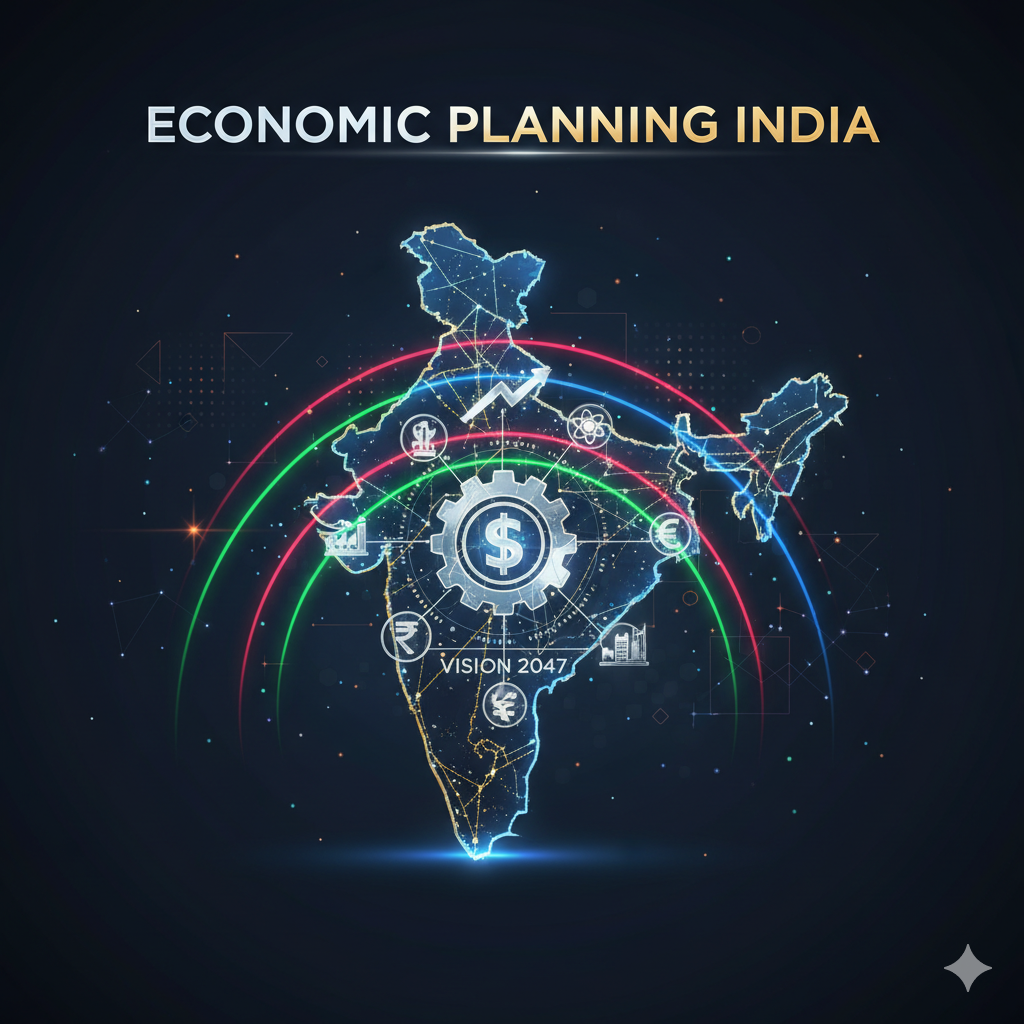Introduction
Deficit is a crucial concept in the field of public finance and macroeconomics. It refers to the situation where the expenditure of the government or any economic unit exceeds its income during a specific period. In simple terms, deficit represents the “gap” between what is earned and what is spent. For governments, deficits are not always negative; at times, they serve as an instrument to stimulate economic growth, generate employment, and encourage investment. However, persistent and widening deficits can threaten macroeconomic stability, raise inflationary pressures, increase debt burden, and weaken investor confidence.
In the Indian context, understanding different types of deficits—such as fiscal deficit, revenue deficit, primary deficit, and budget deficit—is essential for analyzing the country’s financial health. Equally important is to understand the steps taken by the government to reduce deficits through fiscal consolidation, expenditure management, tax reforms, and structural changes.
This article explores the concept of deficit in detail, its types, causes, consequences, and the actions governments take to reduce it, with special reference to India.
Meaning of Deficit
A deficit occurs when the outflow of money exceeds the inflow. In government finances, it reflects that total expenditure is greater than total revenue. The concept is closely linked with the government’s budgetary operations, where annual income (mainly through taxes, non-tax revenues, and borrowings) is compared with annual expenditure (on administration, development, subsidies, defense, and welfare schemes).
For example, if the Government of India collects ₹20 lakh crore in revenues but spends ₹25 lakh crore in a financial year, the deficit would be ₹5 lakh crore. This shortfall is often financed through borrowing, printing of money, or deficit financing.
Deficits are not always harmful. During times of economic recession, deliberate deficit spending (also called deficit financing) is used to boost demand and kick-start growth. However, unchecked and prolonged deficits can be unsustainable, leading to debt crises.
Types of Deficits
In economics and public finance, the concept of deficit is divided into various types to provide a clearer picture of the financial position of the government. Each deficit highlights a particular aspect of budgetary imbalance.
1. Budget Deficit
The simplest form of deficit is the budget deficit, which is the difference between total government expenditure and total receipts (both revenue and capital) excluding borrowings.
- Formula:
Budget Deficit = Total Expenditure – Total Receipts (excluding borrowings)
Historically, this concept was used in India until the 1990s. However, it was later replaced by the fiscal deficit concept as budget deficit did not reveal the true financial situation.
2. Fiscal Deficit
The most widely used measure today, fiscal deficit represents the total borrowing requirement of the government. It occurs when the total expenditure of the government exceeds the sum of its revenue receipts and non-debt capital receipts.
- Formula:
Fiscal Deficit = Total Expenditure – (Revenue Receipts + Non-Debt Capital Receipts)
It essentially shows how much money the government needs to borrow to bridge the gap between income and expenditure. A high fiscal deficit means greater dependence on borrowing, which may push future generations into debt.
3. Revenue Deficit
Revenue deficit occurs when the government’s revenue expenditure is higher than its revenue receipts.
- Formula:
Revenue Deficit = Revenue Expenditure – Revenue Receipts
This indicates that the government is unable to meet its routine operational expenses such as salaries, pensions, subsidies, and interest payments from its revenue receipts. A rising revenue deficit is a sign of fiscal imbalance, as it implies borrowing even for day-to-day operations rather than for productive investments.
4. Primary Deficit
Primary deficit is derived by subtracting interest payments on past borrowings from the fiscal deficit.
- Formula:
Primary Deficit = Fiscal Deficit – Interest Payments
This concept highlights how much of the government’s borrowing is used for meeting current expenses (excluding interest). If primary deficit is zero, it means that the government is borrowing only to pay interest on previous loans, not for new expenses.
5. Monetary Deficit (or Monetized Deficit)
This refers to the deficit financed by the central bank (like RBI in India) through printing new currency. Such deficit financing directly increases the money supply in the economy, which may fuel inflation.
6. Current Account Deficit (CAD)
Although not a budgetary concept, CAD is used in balance of payments analysis. It measures the difference between a country’s imports and exports of goods, services, and transfers. A high CAD implies greater dependence on external borrowings or depletion of foreign exchange reserves.
7. Effective Revenue Deficit
This is a modified concept introduced in India’s budget to exclude grants given to states for capital asset creation from the revenue deficit. It reflects a more realistic picture of revenue imbalance.
Causes of Deficits
Deficits do not occur in isolation. They are the result of multiple factors:
- High Government Expenditure – Rising expenditure on subsidies, welfare schemes, defense, and administration often exceeds revenue.
- Inadequate Tax Revenue – Low tax base, tax evasion, and exemptions reduce government earnings.
- Economic Slowdown – Reduced production and consumption lower tax collections.
- Developmental Needs – Investments in infrastructure, health, and education require heavy spending.
- Debt Servicing – Huge interest payments on past loans add to deficits.
- Global Factors – Oil price fluctuations, global recessions, or pandemics increase fiscal pressures.
Implications of Deficits
Deficits have both positive and negative effects on the economy:
- Positive Side:
- Stimulates growth during recession (Keynesian view).
- Creates assets like roads, ports, and power plants.
- Supports social welfare schemes.
- Negative Side:
- Rising inflation due to excess money supply.
- Increasing debt burden on future generations.
- Risk of credit rating downgrade and reduced investor confidence.
- Crowding out of private investment as government borrows heavily.
Actions of the Government to Reduce Deficits
Reducing fiscal and revenue deficits is one of the prime goals of sound economic governance. Governments across the world, including India, adopt a mix of short-term and long-term strategies for deficit reduction.
1. Fiscal Consolidation
Fiscal consolidation refers to a set of policies aimed at reducing fiscal deficit and debt accumulation. India has introduced several measures, such as the Fiscal Responsibility and Budget Management (FRBM) Act, 2003, which set targets for reducing fiscal and revenue deficits.
2. Expenditure Rationalization
Governments control wasteful expenditure and prioritize productive spending. For example:
- Reducing unproductive subsidies (like fuel subsidies).
- Promoting Direct Benefit Transfer (DBT) to reduce leakages.
- Encouraging outcome-based budgeting to ensure accountability.
3. Revenue Mobilization
Increasing revenues through better tax and non-tax measures is crucial. This includes:
- Expanding the tax base.
- Implementing Goods and Services Tax (GST) to simplify taxation.
- Enhancing tax compliance through digitization.
- Disinvestment of public sector enterprises.
4. Public Debt Management
Borrowings are managed prudently by diversifying sources (domestic and external), reducing short-term borrowings, and maintaining sustainable debt-to-GDP ratios.
5. Structural Reforms
Long-term deficit reduction comes through structural economic reforms such as:
- Liberalization and privatization to enhance growth.
- Labor and land reforms to boost investment.
- Energy pricing reforms to cut subsidy burden.
6. Encouraging Growth
Higher economic growth naturally leads to higher revenues through increased taxation. Policies promoting industrialization, digital economy, and exports help in this regard.
Deficit Reduction in India: Case Examples
- 1991 Economic Reforms: Triggered by a balance of payments crisis, India reduced fiscal deficit through liberalization, disinvestment, and subsidy reforms.
- Kelkar Committee (2012): Suggested roadmap for fiscal consolidation, including rationalization of subsidies.
- FRBM Targets: India aims to reduce fiscal deficit to below 3% of GDP in the medium term.
- Recent Budgets: Emphasis on capital expenditure while reducing revenue expenditure.
Conclusion
Deficits are an integral part of modern economies. While controlled deficits can drive growth and development, persistent and unchecked deficits can destabilize the economy. Understanding the different types of deficits—budget, fiscal, revenue, and primary—provides clarity on the financial health of a country.
Governments must adopt a balanced approach by rationalizing expenditure, mobilizing revenues, implementing fiscal discipline, and undertaking structural reforms. In India, deficit management remains a continuous process, closely monitored through legislative frameworks like the FRBM Act and policy initiatives like GST and DBT.
Thus, while deficits are inevitable, prudent fiscal management ensures they remain sustainable, thereby safeguarding economic stability and promoting long-term development.




